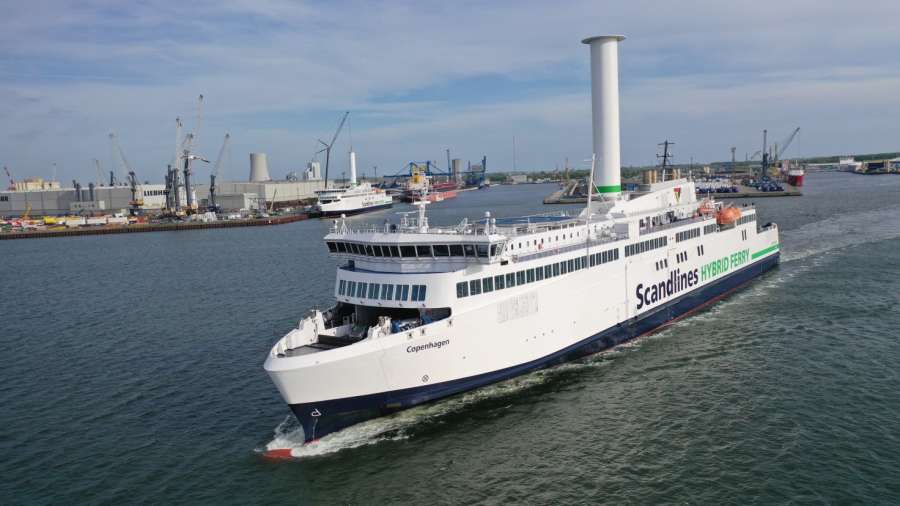Norsepower is supporting Scandlines with its goal of becoming emission-free by 2040, setting higher targets than the Paris Agreement, with the installation of a 30m high Rotor Sail on the Scandlines hybrid ferry, M/V Berlin.
Norsepower has completed the second installation for Scandlines onboard the M/V Berlin in just a few hours, following the successful use of a Norsepower Rotor Sail on the hybrid ferry M/V Copenhagen in 2020, and a year of demonstrated results.
Since 2013, Scandlines has invested more than EUR 300 million in building and converting conventional ferries into hybrid ferries. In 2020, the ferry operator decided to adopt wind propulsion technology by installing Norsepower’s Rotor Sail on the hybrid ferry M/V Copenhagen, which operates on the Rostock-Gedser route between Germany and Denmark, a route which offers very favourable conditions for using Rotor Sails.
After just a year in operation, the Rotor Sail onboard the MV Copenhagen delivered reductions in fuel consumption, and CO2 emissions by 4% on average. Under optimal conditions, emissions reductions can be further increased to 20%. Given these positive results, Scandlines proceeded with the installation of Norsepower Rotor Sails on M/V Berlin in the port of Rostock on 16 May 2022.
Michael Guldmann Petersen, COO, Scandlines said: “After positive experiences with the Rotor Sail on the Scandlines hybrid ferry Copenhagen, Scandlines had prepared the sister ferry Berlin for a Rotor Sail as well. We are happy to see, that the installation was successfully completed and that the ferry went into operation again this morning as planned.”
Tuomas Riski, CEO, Norsepower commented on the latest installation: “Scandlines is taking the international GHG emissions reductions targets extremely seriously and is demonstrating a leading approach to investing in innovation to supersede these. Expanding its use of our Rotor Sail technology on its second vessel highlights the viability of wind power, and the significance of the emissions savings which can be achieved.”
Norsepower’s Rotor Sail solution is fully automated: the system measures the wind speed and direction, based on which it calculates whether using the Rotor Sail will reduce emissions or not. If the conditions are favourable, the Rotor Sail starts automatically. However, for specific port areas which are not suitable for Rotor Sails, the solution has settings to ensure the technology will not be activated.
Norsepower is also currently preparing two Rotor Sails for CLdN, the logistics specialist for road, sea and rail, for installation on board a 2018-built Ro-Ro vessel which is anticipated to be completed by December 2022.
For more information on Norsepower’s technology, please click here.


